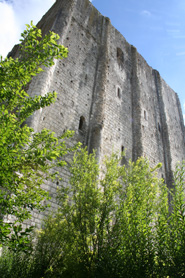
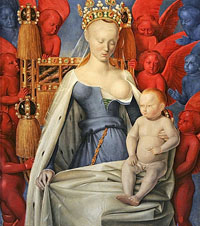
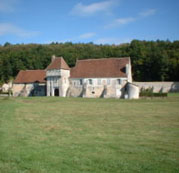

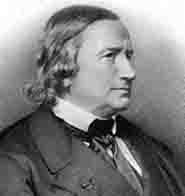

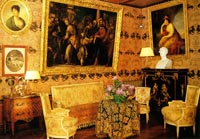
|
Touraine Côté Sud.... par Gaël Staunton
The Irish Eyes invites you to leave the beaten track and discover a charming environment where local men and women demonstrate their love for the 'terroir' : Touraine côté Sud
From the medieval city of Loches we discover what it has to offer.
If you come with your family for the week why not try an adventure in the 'Roulotttes de la Grangée', these wonderful fixed caravans (gipsy style), with all the modern comforts. Or for a couple we recommend the Corroirie du Liget (Monastery), where Madame de Mareuil will greet you, and Jeff de Mareuil will reserve a welcome that is in keeping with the surroundings, a unique experience in a 10th century monastery with 21st century comfort.
Of course the tourist office in Loches and in Grand-Pressigny will offer other forms of accommodation: gites, farmhouses, hotels, camping at Chemille-sur-Indrois (13 km from Loches), 4 star camping with private swimming pool and chalets.
Now that you are there you have an embarrassment of choices to occupy your day.
If you are interested in history you have come to the right place. Whether prehistory, the middle ages, the renaissance or monastic life... the city of Loches has been at the heart of European history.
A fortress city and the seat of the Counts of Anjou for three centuries. It housed the belligerent Foulques Nerra, who was responsible for the construction of the famous donjon (one of the tallest in France). Richard the Lionheart, Charles VII, Philippe Auguste, Louis XI (and of course the Plantagenets), have all left their marks on history here.
The fair sex was also well represented in the busy city of Loches: Joan of Arc, Anne de Bretagne, Agnes Sorel (whose body was transferred from the royal Logis to the College Saint Ours), all left their mark.
The arts were also represented in the form of Rene Descartes, Alfred de Vigny, Emmanual Lansyer, and more recently Jacques Villeret, Another passionate for the region was Comte Xavier Branicki who occupied the Château de Montresor in 1849, and restored and installed many works of art and furnishings including some treasures of the king of Poland.
For those interested in sport there is a wide choice of activities: horse riding, sailing and other water sports, golf. cycling, walking. There are wonderful trails to follow in the countryside when one can have charming encounters with the locals and discover little restaurants with delicious food.
En route one hears the chimes of the oldest bells in the 'department'; they have been tolling since 1367, and stop for a drink at the fountain of Saint Marc at Chaumussay
reputed for its therapeutic cures. Share the serenity with the fishermen on rivers Claise and Indre, watch the birds on lake Louroux, take a spiritual visit to Blanche-Saint Martin Chapel, everything leads one to relax and leave the stress behind.
The fresh air gives one an appetite to taste the 'saveurs de Touraine'. The choice is interesting, from the 'gélines'(small hens), that are characteristic of the region (delicious), the local lamb, the 'rillons', cheeses of Saint-Maure made from the milk of the Verneuil creamery (the chefs recommend its gustatory value).
In a few days you can take a trip back in time: It has been over 1500 years since the first flint was worked at Grand-Pressigny, and wonderful examples are to be seen at the new museum.
A new spa centre will open in September 2008.
Alfred de Vigny
Alfred de Vigny was born in Loches in 1797 and died in Paris in 1863. He was elected to the Academy Francaise in 1845. He is credited with the following:"A less bad government is one that shows itself less, and is felt to be less well paid”. (Extract from ‘Journal d’un poéte’ published by Louis Ratisbonne after the death of Alfred de Vigny).
René Descartes
René Descartes was born March 31, 1596, La Haye [now called Descartes], Touraine and died February 11, 1650, in Stockholm. He was a French philosopher and also a mathematician. His method led him to the famous "cogito ergo sum" when translated means "I think, therefore I exist". This cogito was the foundation of Descartes quest for certain knowledge. He explored doubt and how we can prove that we exist... .
Maurice -Emmanuel Lansyer
The painter Maurice-Emmanuel Lansyer (1835-1893) a student of Courbet, was part of the impressionist group. He left his villa and his extensive collection of Japanese art to the city of Loches.
During his life he painted more than 1500 canvases. Today he is somewhat neglected, but in his time he was considered an excellent landscape painter like Millet or Corot. A portrait of Maurice- Emmanuel Lansyer by the painter Carolus Duran can be seen at the Orsay Museum in Paris.
Xavier Branicki
In 1849, Xavier Branicki, son of an illustrious Polish family bought the chateau Montrésor and 2000 hectares of the surrounding land. This Polish émigré, had accompanied Napoleon to Constantinople during the Crimean war, and tried to form a Polish regiment. He was also an important financier and helped create the Credit Foncier de France. He was the author of various economic, historical and political works.
|
|